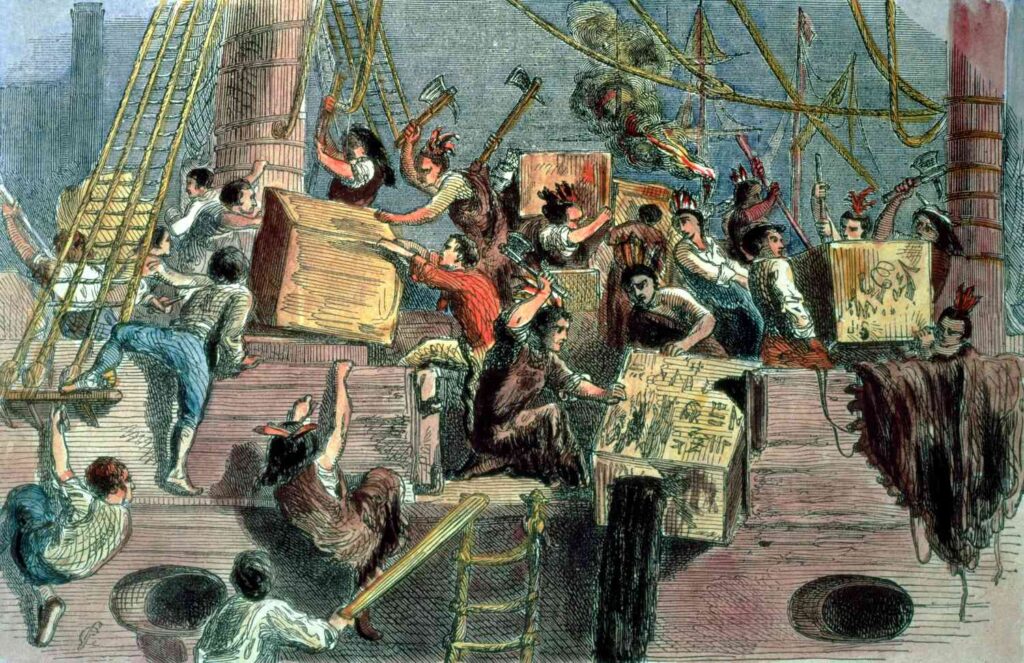When did Coffee come to America?
Coffee is rooted in Ethiopia, originated in Arabic Peninsula, was baptized in Europe, and entered America to win the heart of Americans. Surprisingly an Islamic Drink all the way traveled from Arabian Region entered America and soon became the Cup of Patriotism against British Colonial Rule. The journey of a coffee bean from its source to many doors in the world was very challenging. In our Blog “Where does Coffee originate from” we have gone through its Roots, Originating and Flourishing in the Islamic world, and then Entry into the European Continent. When did Coffee come to America?
Now let’s explore its journey toward North America and South America.
A Brief History: When did Coffee come to America?
In 1714, the Mayor of Amsterdam presented a gift of a young coffee plant to King Louis XIV of France. The King planted it in a greenhouse Jardin des Plantes, the Royal Botanical Garden in Paris. In 1720, a young naval officer, Gabriel de Clieu obtained a seedling from the King’s plant and managed to transport it safely to Martinique on the Caribbean Island. Around 50 years later there were 18,680 coffee trees in Martinique from this seedling, enabling the spread of coffee cultivation to French Colony Saint-Domingue, in the western portion of the Caribbean Island (modern-day Haiti), Mexico in North America, and other islands of the Caribbean.
However, Coffee cultivation started in the French colonial territory of Saint-Domingue in 1734, and by 1788 it became the dominant player in the world’s market. Almost half the world’s coffee was coming from this territory only. The French colonial plantations here relied heavily on African slave laborers. However, the dreadful conditions that the slaves worked in on coffee plantations forced them to unite, revolt, and the soon-to-follow Haitian Revolution. On 1st January 1804, the entire island was declared independent under the Arawak-driven name of Haiti. Thereafter, the coffee industry never fully recovered in Haiti. While coffee united people to earn independence but lost its glory in the world. Once the world’s biggest supplier became the least in the coffee trade.
Coffee soon found its way to the Isle of Bourbon, now known as La Réunion, in the Indian Ocean. Bourbon composes the most culturally and genetically important groups of Coffea arabica, originating in Yemen, where it was cultivated as a crop. Historical records show that the French attempted to introduce this coffee from Yemen to Bourbon Island (now La Réunion) three times, in 1708, 1715, and 1718. Only a small number of plants from the second introduction and some from the third introduction were successful. The plant produced smaller beans and was deemed a different variety of arabica known as var. Bourbon. The Santos coffee of Brazil and the Oaxaca coffee of Mexico are the progeny of that Bourbon tree.
Love and Theft: Brazil’s Journey to Coffee
Legends say that in 1727, the Governor of Maranhão e Grão-Pará in northeastern Brasil, sent Sergeant Major Francisco de Melo Palheta to French Guiana to settle a land dispute between French and Dutch Guiana. He arrived in Cayenne and wanted to smuggle out the coveted coffee plants. Francisco initially had difficulty obtaining these seeds, but he captivated the French Governor of Cayenne’s wife, Madame D’Orvilliers and she sent him enough seeds and shoots to commence the coffee industry in Brazil. By 1770 the first coffee plantation was established in the state of Rio de Janeiro. However, cultivation did not gather momentum until independence in 1822 from Portuguese Rule.
After that the massive tracts of the Atlantic Forest, first from the vicinity of Rio and later São Paulo were cleaned for coffee plantations and the production and export exploded. By 1852, Brazil became the largest producer of coffee in the world and it has held that status ever since. It dominated world production, exporting more coffee than the rest of the world combined, from 1850 to 1950. Even today, Coffee is one of Brazil’s biggest exports. Since 1950, Brazil saw the widening of the playing field due to the emergence of several other major competitive producers, notably Colombia, Ivory Coast, Ethiopia, and, most recently, Vietnam, which overtook Colombia and became the second-largest producer in the world, behind Brazil. Vietnam today is number one in the Robusta Coffee production in the world. Robusta coffee is the cheaper coffee bean and they contain more caffeine than expensive Arabica beans. In 1893, coffee from Brazil was introduced into Kenya and Tanzania (Tanganyika).
Boston Tea Party: the Revolution Established Coffee in America
The Boston Tea Party was an American political and mercantile protest by the Sons of Liberty in Boston, Massachusetts. It was to protest the Tea Act of May 10, 1773, which allowed the British East India Company to sell tea from China in American colonies without paying taxes apart from those imposed by the Townshend Acts. The Sons of Liberty strongly opposed the taxes in the Townshend Act as a violation of their rights. On December 16, 1773, the demonstrators, some disguised as American Indians, boarded the ships and destroyed the entire shipment of tea belonging to the British East India Company. They threw around 342 chests of tea into the Boston Harbor.
Large numbers of Americans joined the protest by boycotting tea and switching to drinking coffee. Drinking tea then had become unpatriotic. The episode escalated into the American Revolution and became an iconic event in American history. The end of the Revolutionary War was in 1783. This means that the Americans had boycotted tea for almost 10 years. Over these periods people developed a taste for coffee and Tea was eventually phased out.

In the latter half of the 19th century, cultivation was taken up by many countries in the American continent, but in almost all of them, it was done through the process of large-scale displacement and exploitation of indigenous people. These created a harsh negative impact on the social structure, leading to many uprisings, coups, and bloody suppression of peasants. Guatemala is one of those countries which was mishandled this way. They started production of coffee in around the 1500s but lacked the manpower to harvest the coffee beans. As a result, the Guatemalan government had to force indigenous people to work in the fields. This led to a strain in the indigenous and Guatemalan people’s relationship that still exists today.
However, Costa Rica is a notable exception. Coffee took root here in 1779 when the Coffea Arabica plant was first grown in Costa Rica’s Central Valley, Meseta where ideal growing conditions – including fertile soil, high altitude, and a cool climate – contributed to its success. Cultivation continued and the Costa Rican government soon realized the enormous economic potential of this product. The government offered free land to many coffee farmers in the 19th century. During this time, production skyrocketed. By 1829, the revenue from coffee exports was leading the economy leaving behind tobacco, sugar, and cacao. Coffee was initially exported to England through Panama and Chile, and was known as “Café Chileno de Valparaíso”. In 1843, Guernsey captain William Le Lacheur Lyon loaded the first cargo of nearly 5000 bags of Costa Rican coffee to Britain. The venture was a big hit and sparked a national interest in Costa Rican coffee. Indeed, until World War II England was the largest recipient of Costa Rican coffee exports.
World War II: Walking together can make the journey Joyful!
Before World War II (1939 – 1945), Europe was the largest consumer of coffee, and Latin America had a major contribution of around 40% to the coffee trade. Once the war started Latin America lost 40% of its market and was on the verge of economic collapse. Coffee was Latin America’s principal export commodity. From 15 to 75% of the total exports of Brazil, Colombia, Costa Rica, El Salvador, Guatemala, Haiti, Ecuador, Honduras, the Dominican Republic, and Nicaragua were from coffee.
The United States saw this and talked with the Latin American countries and signed an agreement in 1940 to protect fourteen Latin American coffee-producing countries by providing them a market in the U.S. during World War II. This was the first international agreement on coffee trade known as Inter-American Coffee Marketing Agreement. This agreement expired in 1948. This agreement established U.S. import quotas at reasonable prices and as a result, the producers agreed on an equitable division of the U.S. market. The U.S. government monitored this agreement. To this effect, the value of coffee doubled, which greatly benefited coffee producers and Latin American countries.
Modern Days: Birth of Peet’s Coffee and Starbucks
By the 18th century, coffee had become one of the world’s most profitable commodities. Consumption and popularity in the US increased, especially during the Civil War. American Soldiers were given Coffee as a replacement for rum and brandy during the war. This change made a dramatic impact on soldiers during the Civil War who relied heavily on caffeine during battle.
The wave of drinking coffee continued to rise, with the first coffee company being founded in San Francisco around 1850. Pioneer Steam Coffee and Spice Mills became the first known company to commercialize and mass-produce coffee. They are the owner of the household brand namely Folgers Coffee. In 1892, Maxwell House was launched, further expanding the industry, and eventually around 1980 they surpassed Folgers as the biggest coffee business in the United States.
On April 1, 1966, Alfred Peet opened its first major coffee chain “Peet’s Coffee”, at a small storefront in Berkeley, California. Today, it has more than 250 locations across the states. Alfred Peet only inspired and trained three aspiring business owners Gordon Bowker, Zev Siegl, and Jerry Baldwin on how to make the perfect roast. Now they are the founders of the famous Starbucks, the international Coffee Chain. They officially opened their doors in 1971 at the Pike Place Market in Seattle.
This coffee expertise is growing among young people, many using it as training for the culinary world. As much as a string of fresh rosemary or a juicy, ripe tomato bear a myriad of complex flavors, coffee does, too.
Indeed, a signature drink of Arabic mystic traveled through Europe and entered the American continent to win the hearts of the people. Truly a Cup of Joe.
To know its Roots, Origin, and Flourishing in the Islamic world, and how it gets Baptized in the Western World read “Where does Coffee originate from“. Interestingly the history of coffee in India is rooted in the way of Smuggling. The story dates back to the late seventeenth century. An Indian Sufi pilgrim to Mecca, known as Baba Budan smuggled seven coffee seeds back to India from Yemen. To know more about the journey of Coffee in India read “Indian Coffee stands on the Smuggling of 7 beans“.





Pingback: Coffee found its root in India through Smuggling – In Food Travel